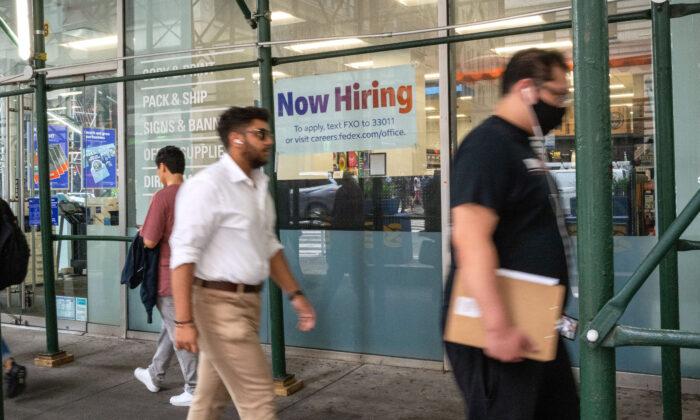The unemployment rate rose to 3.7 percent last month from 3.4 percent. It also topped market forecasts of 3.5 percent.
The change in total nonfarm payroll employment was revised higher by 52,000 in March and 41,000 in April. In total, the BLS revised employment levels in March and April by a combined 93,000.
Employment gains were driven by professional and business services (64,000), government (56,000), health care (52,000), and leisure and hospitality (48,000). The construction and transportation and warehousing sectors added 25,000 and 24,000, respectively. The manufacturing industry shed 2,000.
Wage growth cooled slightly in May as average hourly earnings slowed to 4.3 percent from 4.4 percent. That came in below economists’ expectations of 4.4 percent. Average hourly earnings rose by 0.3 percent month-over-month, down from an 0.4 percent increase, to $33.44.
The labor force participation rate was flat at 62.6 percent, while average weekly hours slipped to 34.3 from 34.4.
The number of people working two or more jobs edged up slightly to 7.762 million, from 7.707 million in April. The number of self-employed workers maintained its downward trend, sliding to 9.403 million.
Financial markets recorded gains following the jobs data. The Dow Jones Industrial Average rose by more than 500 points or 1.7 percent during the trading session. The other leading benchmark indexes also climbed by more than 1 percent.
Treasury yields were up across the board, with the benchmark 10-year yield rising by about 3.5 basis points to above 3.64 percent.
Heading Into May Jobs Data
Last week’s first surprise came after the Job Openings and Labor Turnover Summary (JOLTS) data revealed that the number of job vacancies unexpectedly climbed to 10.103 million in April from 9.745 million in March. That also topped economists’ expectations of 9.375 million.Job openings had been on a sharp decline for three consecutive months with many market observers warning that hiring was showing signs of slowing down.
The number of job quits edged lower to 3.79 million in April from 3.842 million in March and below the peak of about 4.5 million in November 2021. The quits rate—a measurement of the proportion of voluntary employment leavers among total employment—ticked down to 2.4 percent from 2.5 percent.

But while employment opportunities grew, U.S.-based employers announced more than 80,000 layoffs in May, up from 66,995 in April, according to new Challenger data. That’s up by about 286 percent from the same time a year ago.
In the first five months of 2023, companies announced 417,500 job cuts, a 315 percent increase from the same span a year ago.
“Consumer confidence is down to a six-month low and job openings are flattening. Companies appear to be putting the brakes on hiring in anticipation of a slowdown,” Andrew Challenger, a labor expert and senior vice president of Challenger, Gray & Christmas, said in a statement.
This year’s layoffs have been driven by technology (136,831), retail (45,168), and finance (36,937).
But the payroll processor noted a broad-based slowdown in pay growth last month.
Although there were many surprises in last week’s labor data, Nancy Tengler, CEO and chief investment officer of Laffer Tengler Investments, says it’s important to watch the trends.
The Federal Reserve
How will this affect the Federal Reserve’s decision-making at this month’s Federal Open Market Committee (FOMC) policy meeting?Investors still anticipate that Fed Chair Jerome Powell will hit the pause button. However, Jay Woods, chief global strategist at Freedom Capital Markets, thinks the central bank remains in “more hiking mode and a pause is just that: a pause, not a pivot.”
Powell has asserted that the labor market needs to cool off considerably to help the institution achieve its 2 percent target rate.
According to Bryce Doty, senior portfolio manager at Sit Fixed Income Advisors, thinks the central bank is incorrectly assessing the labor numbers.
“We knew people would burn through COVID-related savings and eventually return to the workforce. The effect is naturally a higher unemployment rate and increased supply of labor also slows wage growth,” he said in a note.
“The Fed continues to misinterpret job data, so it’s difficult to predict the reaction to these numbers, but we still doubt they will raise rates at the next Fed meeting.”
But some observers think that more work needs to be done because labor costs are becoming more prominent in the inflation trends.
The FOMC will hold its two-day policy meeting on June 13 and 14.





